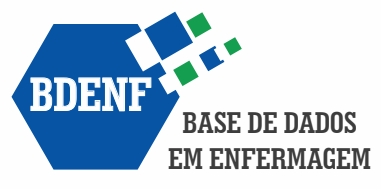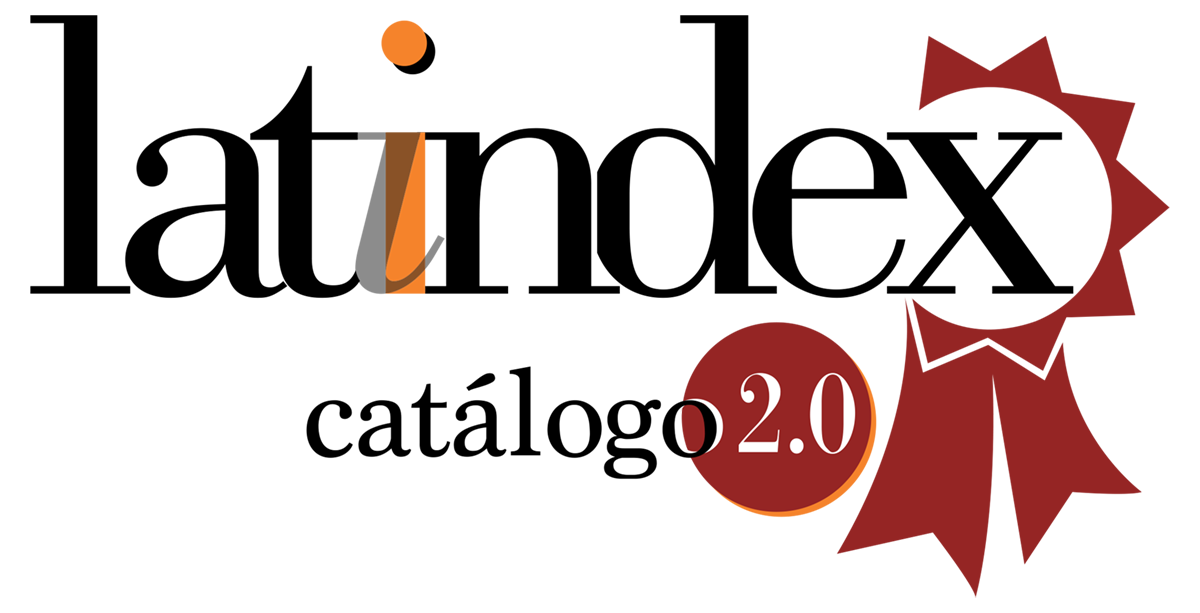Influência das variações da pressão positiva sobre a função renal
DOI:
https://doi.org/10.5935/1415-2762.20200016Palavras-chave:
Lesão Renal Aguda, Unidades de Terapia Intensiva, Ventilação Mecânica, Avaliação em Saúde, Respiração com Pressão PositivaResumo
Objetivo: verificar se o emprego de ventilação mecânica invasiva (VMI) com pressão positiva predispõe o aparecimento de lesão renal aguda (LRA) em pacientes críticos. Método: coorte prospectiva de abordagem quantitativa desenvolvido em Unidade de Terapia Intensiva (UTI) de um hospital público. Os pacientes elegíveis foram selecionados por conveniência. Para a coleta de dados aplicou-se questionário constituído de itens sobre variáveis clínicas e laboratoriais. As informações foram extraídas do prontuário durante o período de 15 dias. A análise dos dados foi descritiva e inferencial. Consideraram-se significativos resultados com p≤0,05. Resultados: dos 79 pacientes avaliados, a hipertensão arterial esteve entre as comorbidades mais incidentes (29,1%). Entre os pacientes analisados, 59,5% necessitaram de VMI com PEEP ≥10 cmH2O. Do total de pacientes, 91,1% evoluíram com disfunção renal, segundo a classificação KDIGO. Como desfecho, 34,2% dos pacientes evoluíram a óbito. Pacientes que usaram PEEP >5 cmH20 mostraram significativa predisposição à disfunção renal (p≤0,05). Conclusão: a ventilação mecânica invasiva com pressão positiva (PEEP) foi um fator que contribuiu para o agravo da função renal em diferentes gradações. Constatou-se que pacientes em VMI com PEEP >5 cmH2O estão mais predispostos ao aparecimento da LRA em UTI, em razão da tendência à idade avançada, a sobrepeso, tempo prolongado de ventilação mecânica e ainda hipertensão arterial.
Downloads
Referências
Pires FC, Fanan JMV, Nascimento JSC. Ações de cuidado para a promoção da segurança ao paciente em ventilação mecânica invasiva. Rev Enferm UFSM. 2017[citado 2018 nov. 15];7(3):411-23. Disponível em: https://periodicos.ufsm.br/reufsm/article/view/25685/pdf
Barbas CS, Ísola AM, Farias AMC, Cavalcanti AB, Gama AMC, Duarte ACM, et al. Recomendações brasileiras de ventilação mecânica. Rev Bras Ter Intensiva. 2014[citado 2018 nov. 12];26(2):89-121. Disponível em: http://www.scielo.br/pdf/rbti/v26n2/0103-507X-rbti-26-02-0089.pdf
Van Den Akker JP, Egal M, Groeneveld AB. Invasive mechanical ventilation as a risk factor for acute kidney injury in the critically ill: a systematic review and meta-analysis. Crit Care. 2013[citado 2018 nov. 18];17: R98. Disponível em: https://dx.doi.org/10.1186%2Fcc12743
Chawla LS, Amdur RL, Shaw AD, Faselis C, Palant CE, Kimmel PL. Association between AKI and long-term renal and cardiovascular outcomes in United States veterans. Clin J Am Soc Nephrol. 2014[citado 2018 dez. 02];448-56. Disponível em: https://dx.doi.org/10.2215%2FCJN.02440213
Chertow GM, Christiansen CL, Cleary PD, Munro C, Lazarus JM. Prognostic stratification in critically ill patients with acute renal failure requiring dialysis. Arch Intern Med. 1995[citado 2018 dez. 02];155:1505-11. Disponível em: https://jamanetwork.com/journals/jamainternalmedicine/article-abstract/620809
Rodrígues MM, Machado VRN, Cadeno JLV. Clinic-analytic behavior of patients with acute kidney injury in an adult intensive care unit,, Cienfuegos,, 2014. Rev Cub Med Int Emerg. 2016[citado 2018 dez. 05];15(3):55-69. Disponível em: http://www.medigraphic.com/pdfs/revcubmedinteme/cie-2016/cie163h.pdf
Yu L, Marques I, Costa BR, Burdmann MC, Emmanuel A. Nefrologia intensiva. Rio de Janeiro: Roca; 2016. 392p.
Khwaja A. KDIGO clinical practice guidelines for acute kidney injury. Nephron Clin Pract. 2012[citado 2018 dez. 6];120(4):179-84. Disponível em: https://www.karger.com/Article/Fulltext/339789
Mehta R, Bagga A, Patibandla A, Chakravarthi R. Detection and Management of AKI in the Developing World: The 18th Acute Disease Quality Initiative (ADQI) International Consensus Conference. Kidney Int Rep. 2017[citado 2018 dez. 6];2(4):515-18. Disponível em: https://www.kireports.org/article/S2468-0249(17)30090-6/fulltext
Lameire NH, Bagga A, Cruz D, De Maeseneer J, Endre Z, Kellum JA, et al. Acute kidney injury: an increasing global concern. Lancet. 2013[citado 2018 dez. 6];382(9887):170-9. Disponível em: https://ac.els-cdn.com/S0140673613606479/1-s2.0-S0140673613606479-main.pdf?_tid=e71a2e1b-bf8d-4090-a539-1042c65b45bf&acdnat=1552655727_13c073a98589288b6 902a35190591d3f
Lewington AJ, Cerda J, Mehta RL. Raising awareness of acute kidney injury: a global perspective of a silent killer. Kidney Int. 2013[citado 2018 nov. 24];84:457-67. Disponível em: https://www.ncbi.nlm.nih.gov/pmc/articles/PMC3758780/
Husain-Syed F, Slutsky AS, Ronco C. Lung-kidney cross-talk in the critically ill patient. Am J Respir Crit Care Med. 2016[citado 2019 jul. 28];194(4):402-14. Disponível em: https://doi.org/10.1164/rccm.201602-0420CP
Hepokoski ML, Malhotra A, Singh P Crotty Alexander LE. Ventilator-Induced kidney injury: are novel biomarkers the key to prevention? Nephron. 2018[citado 2018 nov. 4];140(2):90-3. Disponível em: https://www.karger.com/Article/FullText/491557
Kobr J, Fremuth J, Sasek L, Jehlicka P, Hrdlicka R, Racek J, et al. Reduction of renal function during mechanical ventilation of healthy lungs in an animal biomodel. Bratisl Lek Listy. 2015[citado 2018 dez.14];116(1):25-9. Disponível em: http://www.elis.sk/download_file.php?product_id=4112&session_id=n0gqh10ettdpqsloke3is9ac00
Hoste EA, Bagshaw SM, Bellomo R, Cely CM, Colman R, Cruz DN, et al. Epidemiology of acute kidney injury in critically ill patients: the multinational AKI-EPI study. Intensive Care Med. 2015[citado 2018 dez. 14];41:1411-23. Disponível em: https://link.springer.com/article/10.1007%2Fs00134-015-3934-7
Ralib AM, Nanyan S, Ramly NF, Har LC, Cheng TC, Mat Nor MB. Acute kidney injury in malaysian intensive care setting: incidences, risk factors, and outcome. Indian J Crit Care Med. 2018[citado 2018 nov. 4];22(12):831-5. Disponível em: https://link.springer.com/article/10.1007%2Fs00134-015-3934-7
Kellum JA, Sileanu FE, Murugan R, Lucko N, Shaw AD, Clermont G. Classifying AKI by urine output versus serum creatinine level. J Am Soc Nephrol. 2015[citado 2018 nov. 4];26:2231-8. Disponível em: https://www.ncbi.nlm.nih.gov/pmc/articles/PMC4552117/
Liu AJ, Ling F, Li ZQ, Li XF, Liu YL, DU J, et al. Effect of oleic acid-induced acute lung injury and conventional mechanical ventilation on renal function in piglets. Chin Med J (Engl). 2013[citado 2018 nov. 4];126(13):2530-5. Disponível em: https://insights.ovid.com/pubmed?pmid=23823829
Santos LL, Magro MCS. Ventilação mecânica e a lesão renal aguda em pacientes na unidade de terapia intensiva. Acta Paul Enferm. 2015[citado 2018 dez.14];28(2):146-51. Disponível em: http://www.scielo.br/pdf/ape/v28n2/1982-0194-ape-28-02-0146.pdf
Rizo-Topete L, Ronxo C. Critical care nephrology: a multidisciplinary approach. Blood Purif. 2017[citado 2018 dez.15];43:53-6. Disponível em: https://www.karger.com/Article/FullText/453018
Kovesdy CA, Furth SL, Zocalli C. Obesity and kidney disease: hidden consequences of the epidemic. J Nephrol. 2017[citado 2018 dez. 15];30(1):1-10. Disponível em: http://www.scielo.br/scielo.php?script=sci_art text&pid=S0101-28002017000100001
Downloads
Publicado
Edição
Seção
Licença
Copyright (c) 2020 Reme: Revista Mineira de Enfermagem

Este trabalho está licenciado sob uma licença Creative Commons Attribution 4.0 International License.





































